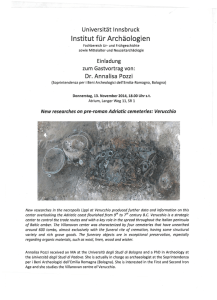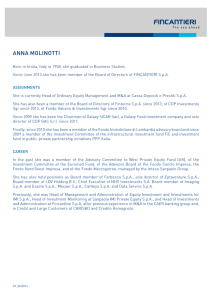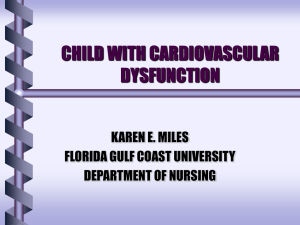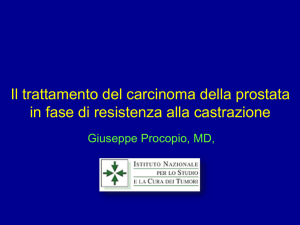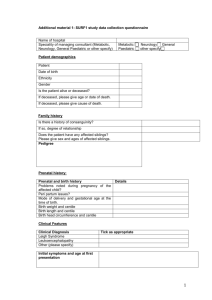A case of dumping Syndrome in a pa ent undergoing
advertisement
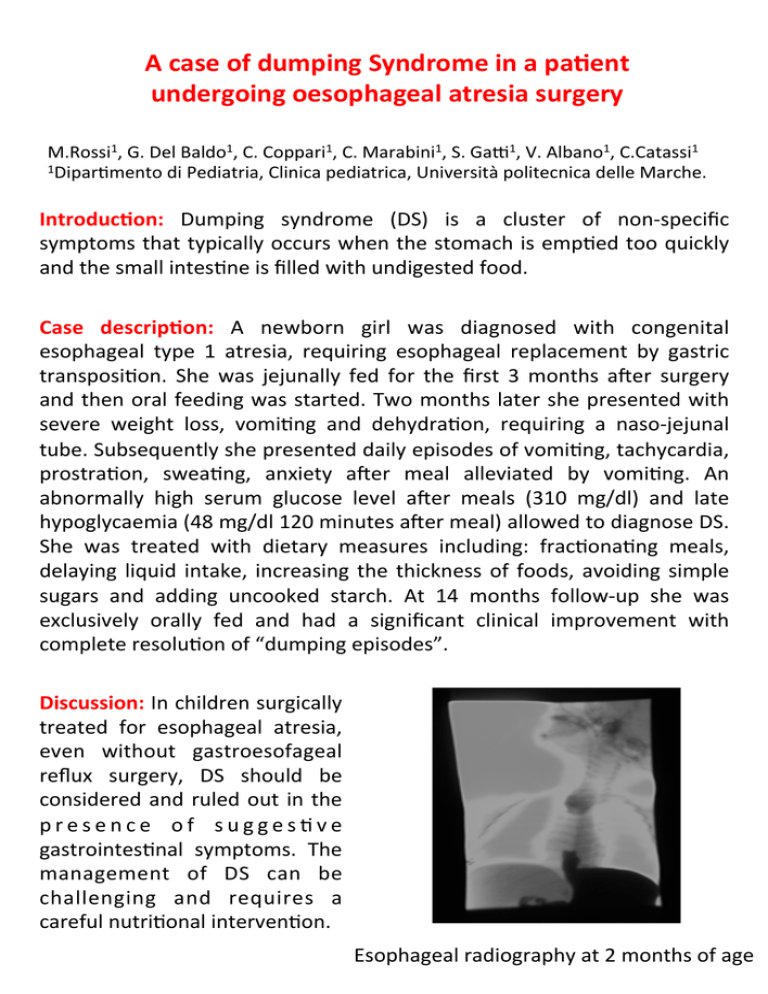
A case of dumping Syndrome in a pa3ent undergoing oesophageal atresia surgery M.Rossi1, G. Del Baldo1, C. Coppari1, C. Marabini1, S. Ga71, V. Albano1, C.Catassi1 1Dipar;mento di Pediatria, Clinica pediatrica, Università politecnica delle Marche. Introduc3on: Dumping syndrome (DS) is a cluster of non-­‐specific symptoms that typically occurs when the stomach is emp;ed too quickly and the small intes;ne is filled with undigested food. Case descrip3on: A newborn girl was diagnosed with congenital esophageal type 1 atresia, requiring esophageal replacement by gastric transposi;on. She was jejunally fed for the first 3 months aPer surgery and then oral feeding was started. Two months later she presented with severe weight loss, vomi;ng and dehydra;on, requiring a naso-­‐jejunal tube. Subsequently she presented daily episodes of vomi;ng, tachycardia, prostra;on, swea;ng, anxiety aPer meal alleviated by vomi;ng. An abnormally high serum glucose level aPer meals (310 mg/dl) and late hypoglycaemia (48 mg/dl 120 minutes aPer meal) allowed to diagnose DS. She was treated with dietary measures including: frac;ona;ng meals, delaying liquid intake, increasing the thickness of foods, avoiding simple sugars and adding uncooked starch. At 14 months follow-­‐up she was exclusively orally fed and had a significant clinical improvement with complete resolu;on of “dumping episodes”. Discussion: In children surgically treated for esophageal atresia, even without gastroesofageal reflux surgery, DS should be considered and ruled out in the p r e s e n c e o f s u g g e s ; v e gastrointes;nal symptoms. The management of DS can be challenging and requires a careful nutri;onal interven;on. Esophageal radiography at 2 months of age

